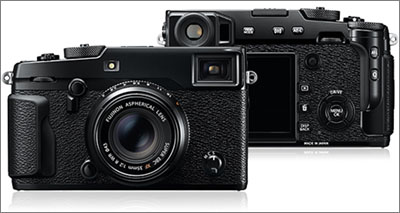Fujifilm just released their newest camera, the X-Pro2. Since I have been relying on an earlier Fujifilm camera (the original X-E1) for over three years — and liking the results a whole lot — it seemed like time to move up to the newer, more refined body. My new X-Pro2 arrived a few days ago, and so far I’m quite impressed. (My time with the camera has been limited thus far, and I’ll share a much more detailed report once I have had a chance to use it extensively.)

The Fujifilm “x-trans” sensor cameras are appealing for a number of reasons:
- Small, light mirrorless designs offer an alternative to larger DSLR systems.
- The x-trans sensor produces excellent image quality and uses a photo site layout that is designed to minimize aliasing without using anti-aliasing filters.
- The Fujifilm lenses are truly top-notch, from primes to zooms, and there is a complete and diverse selection of available lenses.
Until now all of these cameras have use 16 megapixel (MP) 1.5x cropped sensor designs. 16MP is plenty for almost all photographers, and I make beautiful 18″ x 24″ prints from the files. One of the main updates on the X-Pro2 is the addition of an optimized 24MP sensor. If anything, this sensor improves the low light performance and dynamic range of the 16MP versions, and it provides a bit more resolution.
The X-Pro2 also improves on many of the ideas behind the original (and now a bit long in the tooth, though quite inexpensive) X-Pro1. Both cameras use a hybrid viewfinder that incorporates both an optical viewfinder (OVF) and an electronic viewfinder (EVF), both of which have advantages in various situations. The OVF works beautifully with many primes, eliminates shutter blackout, and allows the photographer to see what is going on just outside the borders of the image. The design overlays an electronic display on top of the optical image. These features are very useful to those doing street photography and similar things.
The EVF works well with all lenses, from ultra wide to telephoto and especially with zoom lenses. It can be advantageous in very low light, such as night street photography. It also shows the precise frame edge lines and can display even more image data than the OVF.
The camera feels light but also solid and well-constructed, and it recalls classic rangefinder cameras.
I got mine with the new XF 35mm f/2 WR lens, one of five newer lenses that are optimized to autofocus more quickly on the X-Pro2 (and, presumably, future X-series cameras). It is also weather resistant. I can report that it focuses quickly and accurately in a wide range of situations. Since I also have my older XF 35mm f/1.4 lens, I haven’t yet decided whether I will end up valuing the extra stop of the f/1.4 lens enough to give up the faster AF and smaller size of the new f/2 lens.
That’s all I’ll say for now, but expect more in the not-too-distant future as I gain more experience with the camera. For now, I don’t see any reason to not recommend it.
- Fujifilm X-Pro2 digital camera body — $1699 at B&H or Adorama
- Fujinon XF 35mm f/2 WR lens — $399 / $299* with X-Pro2 at B&H or Adorama (*limited time offer)
(If you find this website and posts like this useful and you are going to get one of these products, consider making your purchase through links on this site. Your price will be the same, but the purchases help support the operation of the site. Thanks!)
Also see: Taking Stock of the Fujifilm X-E1, X-E2, S-T1 Mirrorless Cameras
 G Dan Mitchell is a California photographer and visual opportunist. His book, “California’s Fall Color: A Photographer’s Guide to Autumn in the Sierra” is available from Heyday Books and Amazon.
G Dan Mitchell is a California photographer and visual opportunist. His book, “California’s Fall Color: A Photographer’s Guide to Autumn in the Sierra” is available from Heyday Books and Amazon.
Blog | About | Flickr | Twitter | Facebook | Google+ | 500px.com | LinkedIn | Email
All media © Copyright G Dan Mitchell and others as indicated. Any use requires advance permission from G Dan Mitchell.
